These 4 Milk Uses For Indoor Plants will show you that it is just as healthy for your houseplants as it is for you!
Just like people, your indoor plants need the right vitamins and minerals to thrive. Natural remedies like milk can help boost plant health as it contains calcium, nitrogen, and vitamin B, all of which support your plants in different ways. Let’s take a look at various milk uses for indoor gardening and how to benefit from them!
Milk Uses for Indoor Plants
1. As a Low Dose Fertilizer
Milk contains a high amount of calcium and even trace amounts of nitrogen due to its protein content. While you obviously cannot water your plants with milk, you can add a small amount to your monthly fertilizer for foliage growth.
A good ratio is to dilute 1 part milk in 4 to 6 parts water to avoid overwhelming the plant roots.
Since milk is a low-dose fertilizer, there’s little risk of over-fertilizing. Stick to this mix once every 6-8 weeks to give your plants a balanced dose of nutrients. This DIY will share more info!
2. Milk Foliar Spray
Milk can not only clean your houseplants’ leaves but also prevent issues like powdery mildew and pests like aphids and spider mites. You can use a diluted milk solution in a spray bottle for foliar feeding, allowing both micro and macro nutrients to be easily absorbed by the leaves.
For best results, mix 1 part milk with 3 parts water and spray the leaves lightly, ensuring good coverage. Mist your plant with the milk solution spray from top to bottom, especially on the tops and undersides of leaves.
After letting it dry out for 30 minutes, wipe off any excess from the foliage with a soft, damp cloth. Simple, right? Here are more milk uses you should try!
3. As a Growth Booster
Thanks to its nutrient content, adding milk to the soil of your houseplants and even vegetable garden can have immense benefits. Milk and molasses are even better combinations, though it might sound counterintuitive.
Molasses is full of nutrients like potassium, magnesium, and more, which, when mixed with milk, can help improve soil quality and, consequently, your plants’ growth.
Mix 1 part milk and 3 parts water to prepare this, and stir in 1 tablespoon of molasses. Pour this mixture into the soil, focusing around the base of your plant, and allow it to soak in. To avoid over-nourishing the plants, use this once every quarter.
Note: This solution is best for fast-growing plants and vegetables like nightshades. However, avoid using this solution on plants that prefer neutral to alkaline soils, like succulents or cacti, as the acidity from the molasses may affect their growth.
4. For Calcium Deficiency and Fungal Issues
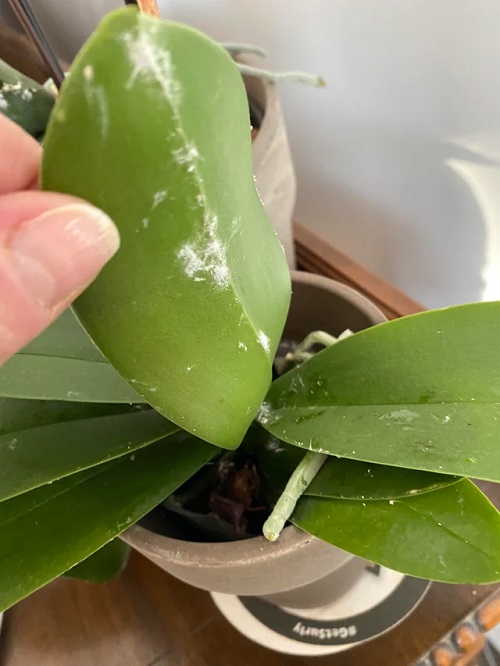 Similar to how deficiencies can cause severe diseases in humans, the same is true for plants. Houseplants show stunted growth and blossom end rot without the right nutrients, especially in peppers, tomatoes, and squash plants. In such cases, milk can be a lifesaver for your plants.
Similar to how deficiencies can cause severe diseases in humans, the same is true for plants. Houseplants show stunted growth and blossom end rot without the right nutrients, especially in peppers, tomatoes, and squash plants. In such cases, milk can be a lifesaver for your plants.
To address calcium deficiency, dilute milk to 1 part milk to 2 parts water and pour it into the soil once a month.
Milk’s antifungal properties also help treat powdery mildew and other fungal infections. To use as a fungicide, mix 1 part milk with 3 parts water and spray it on affected areas twice a week until the issue is resolved.
How To Use Milk on Indoor Plants
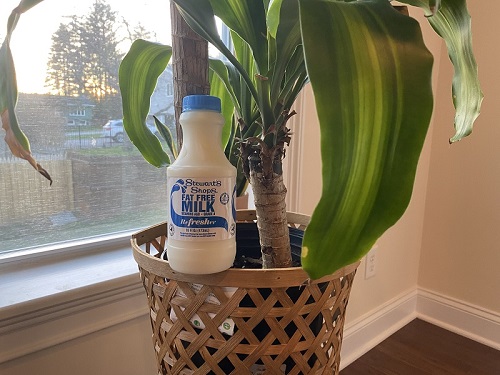 While milk can be a great aid, it’s not a solution to every problem. If a plant is already severely damaged by pests or fungus, milk might make things worse by promoting bacterial growth. Also, milk’s fat content can cause foul odors or rot. Here are key things to remember when using milk for plants.
While milk can be a great aid, it’s not a solution to every problem. If a plant is already severely damaged by pests or fungus, milk might make things worse by promoting bacterial growth. Also, milk’s fat content can cause foul odors or rot. Here are key things to remember when using milk for plants.
- You can use evaporated, fresh, powdered, or expired milk as long as it’s diluted. Never apply undiluted milk directly to plants.
- Sticking to low-fat (1%) or reduced-fat (2%) milk rather than whole or skimmed milk is best. The fats in whole milk can attract pests and create a sticky residue on plants.
- The best dilution ratio is 1 part milk to 3 parts water or 1:4 for sensitive plants. Applying milk without diluting can lead to rot or pest problems.
- Shake and mix the diluted milk solution well before use and let it soak into the soil after; it’s the same as you water your plants usually.
- If milk is applied as a foliar spray, always mist it in the morning.
- Do not use any chemical fertilizer or pesticide on your houseplants to avoid killing the good bacteria present in milk. Right after you pour in the milk, there might be a slight odor, but it will eventually go away.
- Less is more when it comes to using milk on indoor plants. Overwatering your plants with this solution can badly hamper your plants’ growth. Stick to small, controlled applications every 4-6 weeks.
- Lastly, animal milk should be preferred, but you can also use breast milk for plants.
So try these milk uses for indoor plants, and let us know your experiences in the comments below.


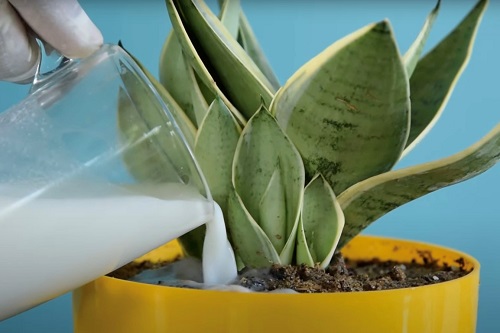
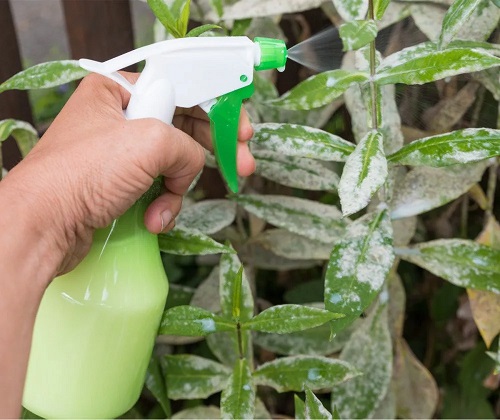
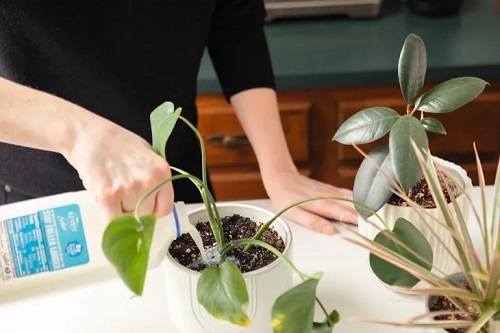

This is a great site. I’m keeping this one for reference.